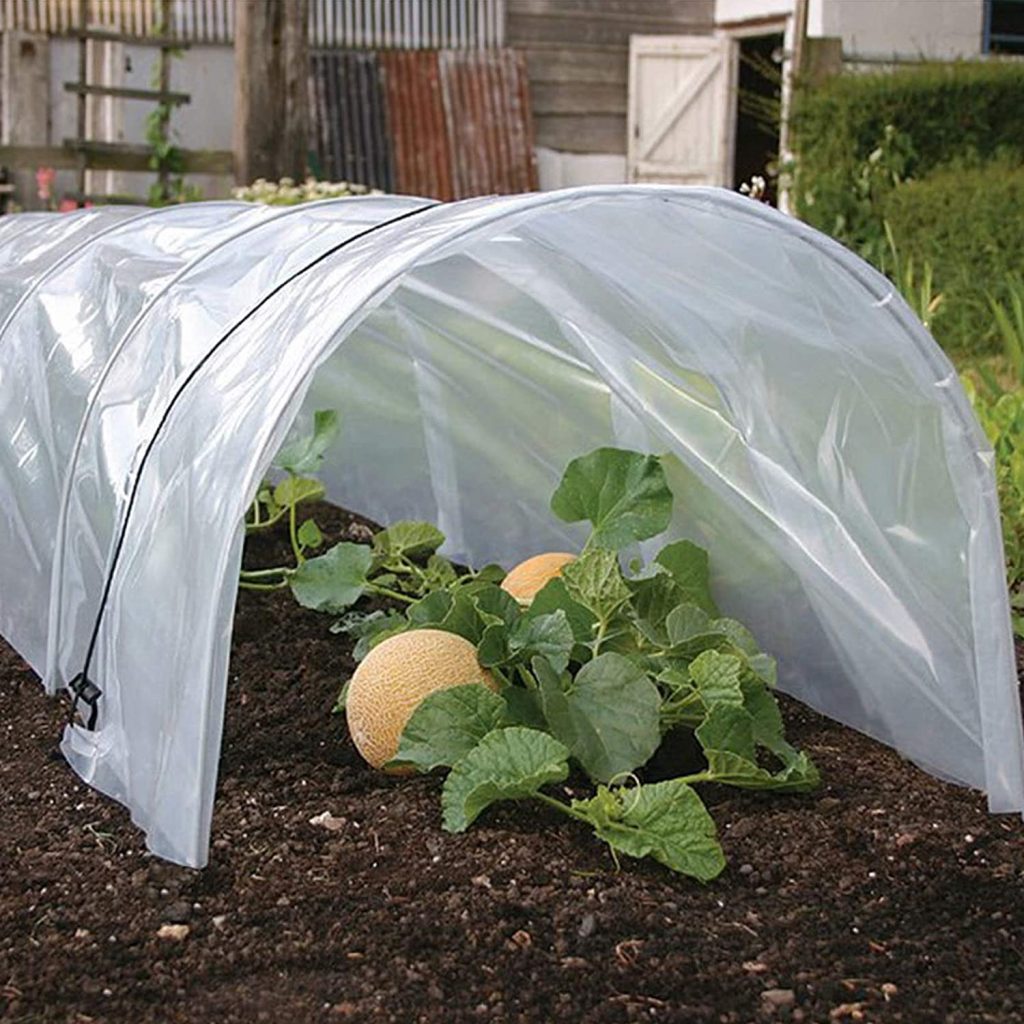Is It Too Late To Sow Cosmos Seeds? Cosmos plants are one of the most popular flowers to put into the garden because they provide bright cheery flowers throughout the summer. However, if you have forgotten to sow them early in the season you may be asking is it too late to sow cosmos seeds?
Cosmo seeds can be sown at the latest approximately 100 days before the first frost of the season which will allow you to get a few blooms before the weather deteriorates as the plants typically take between 70 and 90 days to produce their first flowers. However, to maximize the number of flowers that are produced it’s advisable to provide some protection to the plants as the weather cools down in the fall.
Protections such as row covers will provide additional warmth to the plants encouraging a greater number of flowers to be reduced before the end of the season, however, as cosmos plants are relatively tall you do need a tall row cover. The one we would recommend is provided below, to see the latest price click on the link from Amazon.

Extend Your Season With Growsun Row Covers
However, as cosmos are known to be relatively tall, between 1 and 6 feet tall, depending upon the specific variety you will need to plan ahead if you are intending on using a row cover. This means you need to prune the plant regularly to ensure that you can control its height and also encourage side shoots and the formation of flowers.
When Should Cosmos Seeds Be Planted?
Cosmos plants should generally the sown early in the spring, indoors, in trays as this will allow the plants to get going as early as possible and help to produce blooms relatively early in the season. If you do this the earliest you can expect bloom is around late spring or early summer, however, they will continue to flower for months on end until the first frost hits.
How To Germinate Cosmos Seeds Quickly
Cosmos seeds are a relatively easy plant to germinate, however, some gardeners make the mistake of burying the seeds in the soil. Cosmos seeds require light to germinate and so, therefore need to be left on the surface of the soil.

To ensure that they germinate rapidly it is important to make sure that the seeds have good contact with the soil which needs to remain moist and relatively warm throughout the germination period. Temperatures of approximately 77°F (20°C) are ideal to maximize the rate of growth in a seed tray.
When using a seed tray to germinate the seedlings it is ideal to use a humidity dome as that will help to provide a warmer and more humid environment for the seeds to grow in. However, when using a seed tray important to place it indoors in a location that gets morning sun only and not the hot afternoon sun as the tray can quickly overheat.
Typically, the seedlings will appear approximately 7 to 14 days after the seeds have been put into the soil and they will typically need to spend approximately 4 to 6 weeks in the seed tray before they are ready to be potted on or planted into the garden.
However, to ensure that the plants continue to grow rapidly is important to transplant them as soon as they are ready to go into a larger pot as leaving them in the seed trays will restrict their development and slow down the rate of growth.

Transplanting Cosmos Seedlings Into The Garden
Cosmos seedlings typically can be planted into the garden when the plants have reached a height of approximately 4 to 6 inches, however, this can only be done when are frost-free conditions outside.
If you are planting the cosmos in a period of the year when there are still cold mornings and generally inconsistent weather it is a good idea to protect the plants in the early stages as this will really help the plants to get going quickly using a row cover as mentioned above.
In terms of selecting a location to plant cosmos seedlings, they generally prefer a warm sunny location with rich moist, and free-draining soil containing lots of nutrients. If you’re unsure about the quality of your soil it is recommended that you add an additional bag of compost before placing the seedlings into the ground.

It is also advisable to add a thick layer of mulch to the garden to ensure that the soil remains relatively moist and weed-free. Additionally, if you have a lot of slugs and snails in the garden is also a good idea to add some snail bait to protect the plants even though cosmos are not generally the first choice for slugs and snails to eat.
Caring For Cosmos Plants
Cosmos plants are generally relatively easy to look after once they become established in your garden as they will produce masses of flowers. However, to encourage them to continue to produce flowers on an ongoing basis it is important to deadhead the plants regularly removing spent flowers.
Additionally, if you want to create a bushier plant rather than a plant with a relatively tall growth habit, which cosmos plants are renowned for, it is advisable to regularly pinch out shoots or prune the plant as this will encourage the formation of side shoots rather having the plant continuing to reach for the sky.
If the plants get relatively tall and you live in a windy location it may also be necessary to provide some support to the plant in the form of a stake or even something like a tomato cage also works quite well. However, when applying support structures it is advisable to apply them before they need them as this will ensure the plant is looking its best for as long as possible.

Do Cosmos Plants Self Seed?
Cosmos plants generally will self-seed over time, however, they are not as prolific as other flowering plants. As such it is generally a good idea to try and collect the seed heads at the end of each season to ensure you have an ongoing supplier of seeds that you can replant the following year.
The easiest way to do this is to wait until the spent flower heads have dried out on the plant and then cut off the entire flower and place them into a paper bag and bring them inside. The seeds should be stored in a dry warm location initially and the seeds can be collected at any stage once the flower has dried out.
I am personally quite lazy with these things and I tend to just leave the flower heads in the bag until I’m ready to plant the following year and then separate the seeds from the rest of the material that has been collected.
I hope you found this article useful and have great success growing the cosmos seeds even if they are planted a little late this year. If you have any additional comments or questions please leave them in the section below.
Relevant Articles
Why Are My Cosmos Seedlings Leggy? And What To Do About It
Are Cosmos Deer Resistant? And How To Protect The Plants.
Do Need A Humidity Dome For Growing Seeds?
Do Ranunculus Spread? Are They Invasive?
